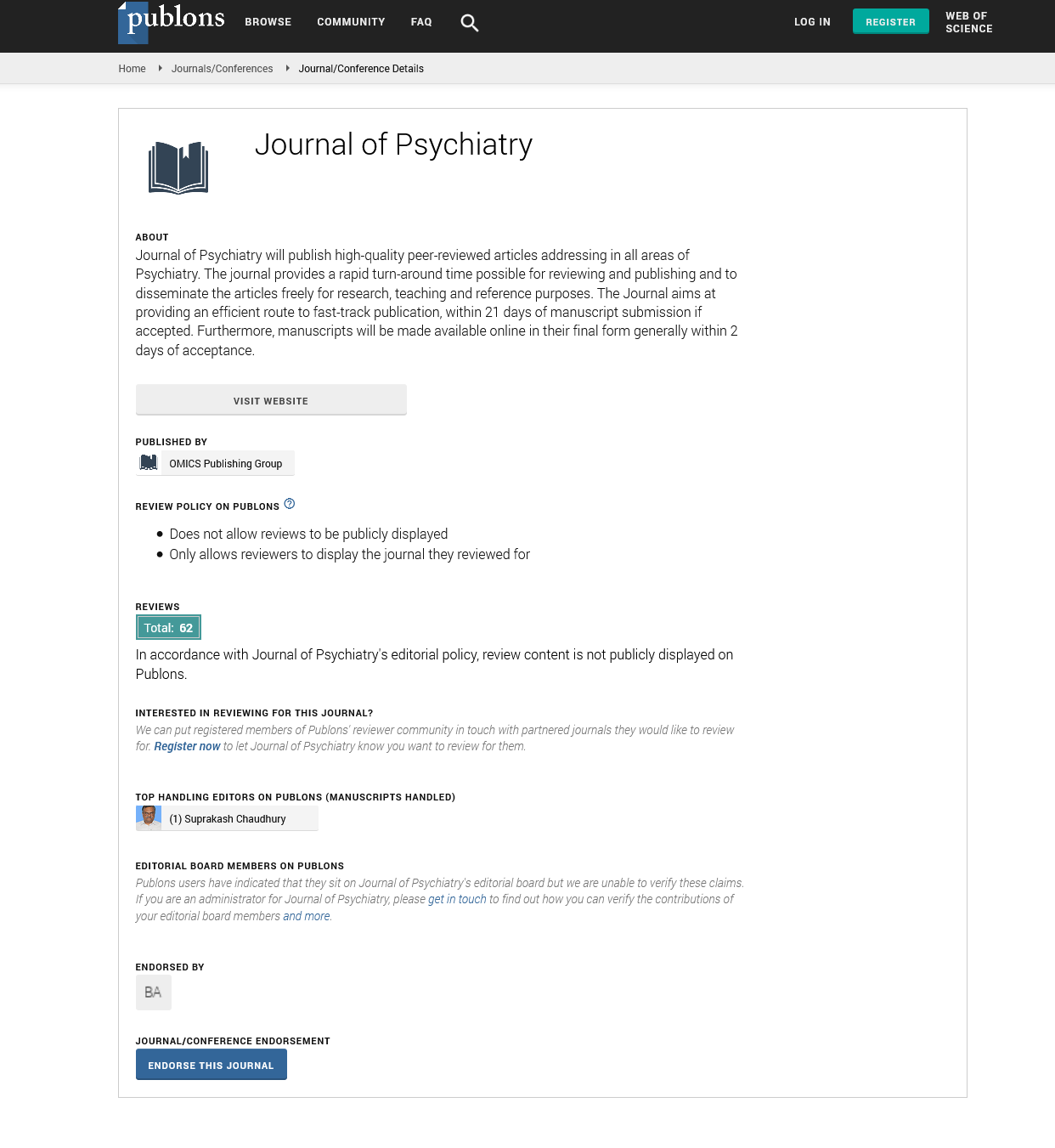PMC/PubMed Indexed Articles
Indexed In
- RefSeek
- Hamdard University
- EBSCO A-Z
- OCLC- WorldCat
- SWB online catalog
- Publons
- International committee of medical journals editors (ICMJE)
- Geneva Foundation for Medical Education and Research
Useful Links
Share This Page
Open Access Journals
- Agri and Aquaculture
- Biochemistry
- Bioinformatics & Systems Biology
- Business & Management
- Chemistry
- Clinical Sciences
- Engineering
- Food & Nutrition
- General Science
- Genetics & Molecular Biology
- Immunology & Microbiology
- Medical Sciences
- Neuroscience & Psychology
- Nursing & Health Care
- Pharmaceutical Sciences
Evidence of brain damage in chronic Ketamine users: A brain imaging study
29th World Psychiatrists Meet
DECEMBER 07-08, 2017 DUBAI, UAE
Wai Kwong Tang
The Chinese University of Hong Kong, Hong Kong
Keynote: J Psychiatry
Abstract:
Background & Objectives: The objectives of this study were to ascertain the pattern of grey and white matter volume reduction and regional metabolic and activation abnormalities in chronic Ketamine users and to evaluate the correlations between these brain abnormalities and cognitive impairments in chronic Ketamine users in Hong Kong. Methods: It was a cross-sectional observational study and was done in counseling center for psychotropic substance abusers in Hong Kong. 136 participants were recruited from October 2011 to April 2014. The participants were divided into two groups: Ketamine users (79) and healthy controls (57). Psychiatric assessments included screening with self-rating questionnaires and face-to-face interviews. All of the participants completed a detailed cognitive battery that covered general intelligence, verbal and visual memory, executive functions, motor speed and language. All of the participants underwent magnetic resonance imaging of the brain. Results: Many of the participants in the Ketamine group also frequently used cocaine and cannabis. Among the Ketamine users, 12.6% were diagnosed with a mood disorder and 8.9% with an anxiety disorder. The participants in the Ketamine group had worse performance than the healthy controls on tests of general intelligence, verbal, visual and working memory and executive functioning. In terms of grey matter volumes, the right orbitofrontal cortex, right medial prefrontal cortex, left and right hippocampus and possibly the left orbitofrontal cortex were smaller in the Ketamine group. In contrast, the volumes of the left basal ganglia, left putamen and possibly the left caudate were higher in the Ketamine group. In terms of white matter volumes, the Ketamine group had a lower periventricular white matter volume in the right hemisphere. The grey matter volumes of the left and right orbitofrontal cortex, right medial prefrontal cortex, left basal ganglia and left putamen, and right periventricular white matter volume were negatively correlated with the severity of Ketamine dependence. The hippocampal volumes were correlated with performance on the arithmetic, information and digit span tests. The periventricular white matter volume also correlated with the information score. A functional connectivity examination of the default mode network revealed significantly decreased connectivity in the medial part of the bilateral superior frontal gyrus, left middle frontal gyrus, bilateral gyrus rectus, left superior temporal pole, left inferior temporal gyrus, bilateral angular gyrus and bilateral cerebellum crus II in the Ketamine group. This group also displayed increased connectivity in the bilateral precuneus and right inferior occipital gyrus. Conclusion: The results provide imaging evidence of brain damage in chronic Ketamine users. Chronic Ketamine use was associated with reduced grey and white matter volumes in certain regions of the brain. Chronic Ketamine use was also associated with altered functional connectivity with the default mode network. Abnormal brain structures and altered functional organization of the brain network may underlie the hypersensitivity towards drug related cues but weakened cognitive control in those with Ketamine addiction. Longitudinal or prospective studies would help to strengthen the evidence on the reversibility of the structural and functional brain damage caused by Ketamine.
Biography :
Wai Kwong Tang is a Professor in the Department of Psychiatry, the Chinese University of Hong Kong. His main research areas are addictions and neuropsychiatry in stroke. He has published over 100 papers in renowned journals and has also contributed to the peer review of 40 journals. He has secured over 20 major competitive research grants. He has served the Editorial Boards of five scientific journals. He was also a recipient of the Young Researcher Award in 2007, awarded by the Chinese University of Hong Kong.

